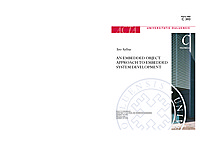
An Embedded Object Approach to Embedded System Development
Building an embedded system from an idea to a product is a slow and expensive process requiring a lot of expertise. Depending on the developer’s expertise, the required quantity and price level of the final product, and the time and money available for development, the developer can build a device from different granularity of components, ranging from ready-made platforms, kits, and modules to individual components. Generally, solutions requiring less expertise, time and money produce products with higher production costs. The main contribution of this thesis is the EOC (Embedded Object Concept) and Atomi II Framework. EOC utilizes common object-oriented methods used in software by applying them to small electronic modules, which create complete functional entities. The conceptual idea of the embedded objects is implemented with the Atomi II framework, which contains several techniques for making the EOC a commercially feasible implementation. The EOC and the Atomi II Framework decreases the difficulty level of making embedded systems by enabling a use of ready-made modules to build systems. It enables automatic conversion of a device made from such modules into an integrated PCB, lowering production costs compared to other modular approaches. Furthermore, it also enables an automatic production tester generation due to its modularity. These properties lower the number of skills required for building an embedded system and quicken the path from an idea to a commercially applicable device. A developer can also build custom modules of his own if he possesses the required expertise. The test cases demonstrate the Atomi II Framework techniques in real world applications, and demonstrate the capabilities of Atomi objects. According to our test cases and estimations, an Atomi based device becomes approximately 10% more expensive than a device built from individual components, but saves up to 50% time, making it feasible to manufacture up to 10-50k quantities with this approach.






















